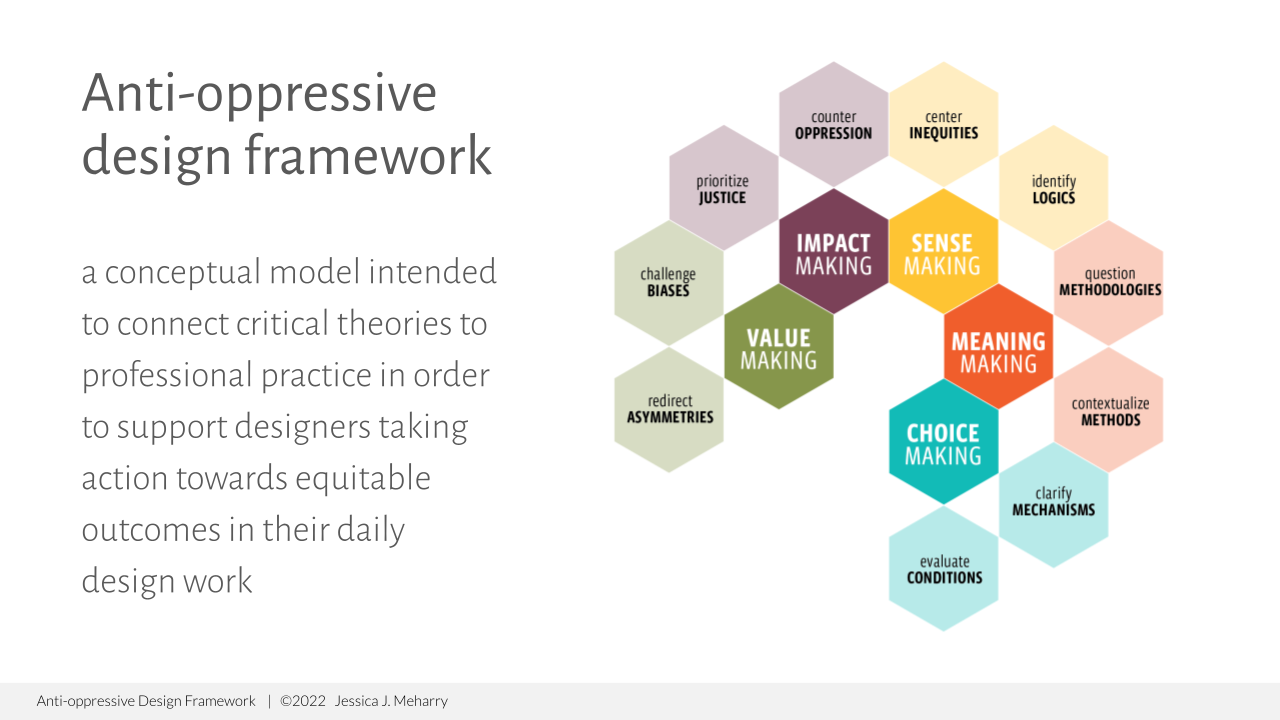Anti-oppressive design framework
Design is often complicit in upholding inequitable structures, allowing bias and oppression to go unchallenged. While there has been substantial progress in challenging the agnostic orientations of design, many still ask, “How do I apply this to my work as a professional?” Through my PhD research, I sought to address this gap by offering a systematic description of five activity nodes that can inform and transform design practice. My goal was to connect critical theories to professional design practice by offering a framework for anti-oppressive design praxis. The resulting conceptual model—a scaffolding for bringing a critical awareness of power into design methods—can support designers to take action in their daily design work.
You can read more about the framework on this Medium post.








